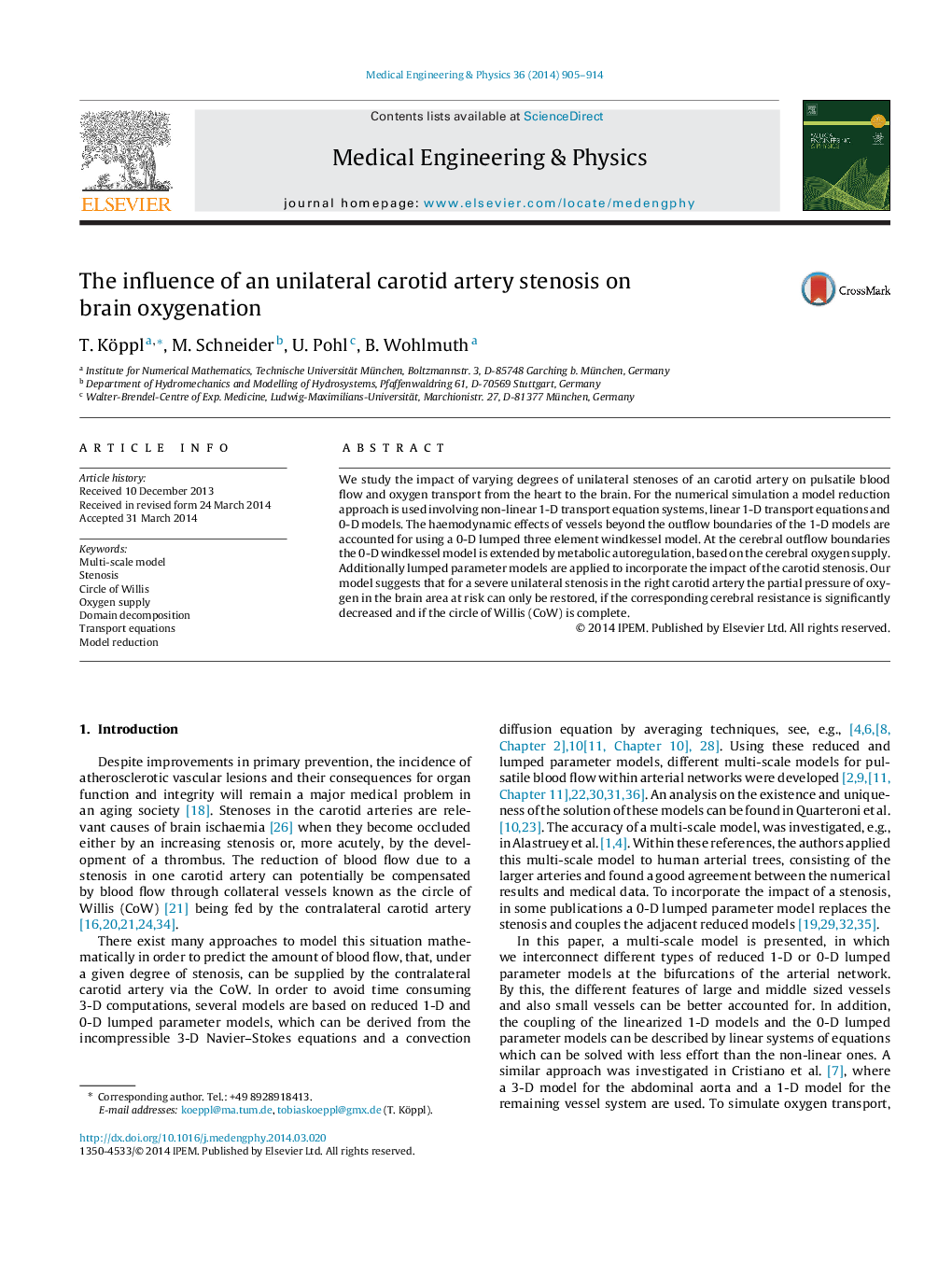| Article ID | Journal | Published Year | Pages | File Type |
|---|---|---|---|---|
| 875881 | Medical Engineering & Physics | 2014 | 10 Pages |
We study the impact of varying degrees of unilateral stenoses of an carotid artery on pulsatile blood flow and oxygen transport from the heart to the brain. For the numerical simulation a model reduction approach is used involving non-linear 1-D transport equation systems, linear 1-D transport equations and 0-D models. The haemodynamic effects of vessels beyond the outflow boundaries of the 1-D models are accounted for using a 0-D lumped three element windkessel model. At the cerebral outflow boundaries the 0-D windkessel model is extended by metabolic autoregulation, based on the cerebral oxygen supply. Additionally lumped parameter models are applied to incorporate the impact of the carotid stenosis. Our model suggests that for a severe unilateral stenosis in the right carotid artery the partial pressure of oxygen in the brain area at risk can only be restored, if the corresponding cerebral resistance is significantly decreased and if the circle of Willis (CoW) is complete.
